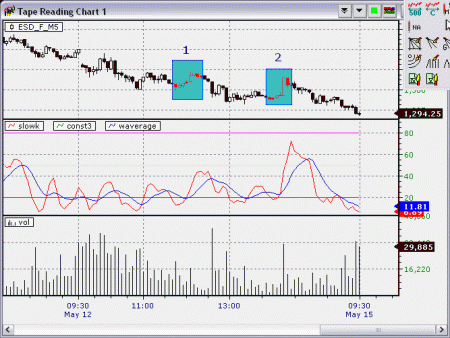Trading System 101 – Part 2
Most beginners like to ask the experts what moving averages they use, what oscillators are better, and are there some magical indicators that the experts are willing to share?
What about the more immediate questions –
How am I able to trade a particular mechanical system?
How to design a system that I can trade with?
You must be compatible with the system
Most beginners look for trading systems that has windfall profits. Thats just plain wrong.
The very first thing when you design or choose to using a trading system, is to make sure its ground rules are compatible with you – physically and mentally.
What do I mean by physical compatibility?
If a system trades 10 to 20 times a day from 9:30 am to 4:00 pm, but you have to go to work 9 am to 5 pm, that is a problem.
If a system has very low winning percentage but you cannot monitor the market every trading day due to various personal reasons and obligations, you are bounded to miss some of the profitable trades that keep the system in the profitable territory.
There are many more reasons, but you get the idea of what I mean – the system is just inheritedly not compatible with you as you and the system cannot both present at the same time all time while the system is taking its trades.
What about mental reasons?
If a system has very low winning percentage relative to the number of trades it takes, then as a very impatient person, do you think you can handle the heat in the middle of the draw down cycle? Not many people can.
If a system tends to have big winners and big losers most of the time, then it will be getting harder and harder to take the next trade, because after each big winner, you are likely to take a big loser. Most people will slowly deviate from the system over time, and even if the system performs over time, you will not.
Work around your restrictions
Always outline your restrictions before designing a system.
If you cannot trade every monday, take that out of the system by not generating signals on that day.
If you must take lunch, include the time restriction in the system right from the beginning.
If you cannot handle too many losers in a row, write it down.
If you cannot handle huge equity swing, write it down.
Most people will find that they have quite a number of restrictions.
The important thing is to design systems to work around you, not the other way around. Otherwise, you will not be able to follow the rules, even though those system rules are designed by you.
Realistic goal
When you start trading a system, test it with smaller size positions so that you will not get burnt while weeding out the bugs, real-time glitches, etc.
Then when you think it is ready, do not bet your farm! Remember a trading system works on probability, you have to take many trades to realize the potential gain that the system has to offer. If you bet bigger than you can afford, you will not see the light at the end of the tunnel. A good rule of thumb is to double the money requirement obtained from backtesting so that you can weather the worst drawdown you know that did happened at least once in the system’s history.
Systems are like cars, check them often
Like cars, your systems can degrade in performance over time. If you do not analysis your systems and their underlying design principals often, the market could play very nasty tricks on you.
The most common issue is that a system’s edge depends on some statistical bias in the underlying data. And the data is slowly and surely drifting away from that bias. If you do not do check-ups on your system, then you will think that the system is just having a normal drawdown until it is too late. By designing appropriate measures, you can tell if the current market condition is still behaving similarly to the historical data you have tested.
For example, your system picks tops and bottoms and it used to do that with 60% winning ratio. Now, after a month of fewer than usual number of trades, and a very high percentage of losers, you better look at the data seriously to determine if this type of market condition exists in your testing, or, you are subjecting your system to work in a market environment that it is not designed for. If it is the latter case, watch closely and figure out if a retirement plan for the system is necessary.
Diversify your designs
Once you get a consistent system working for you. Do not stop there and just hoping the system will last forever.
You need to keep working on the next system, usually a system that explore something different from your previous ones. By having multiple systems of different characteristics working for you, you can improve your overall performance without risking everything on one single system.













